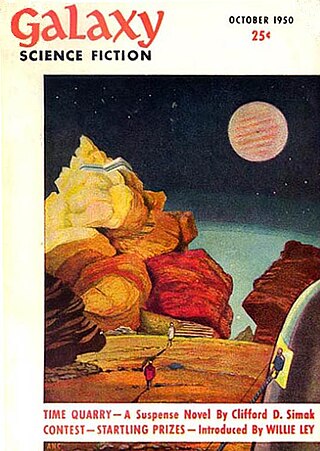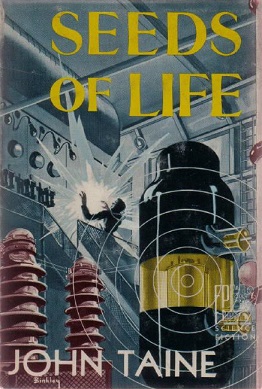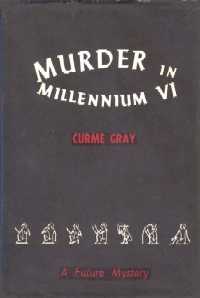
James Benjamin Blish was an American science fiction and fantasy writer. He is best known for his Cities in Flight novels and his series of Star Trek novelizations written with his wife, J. A. Lawrence. His novel A Case of Conscience won the Hugo Award. He is credited with creating the term "gas giant" to refer to large planetary bodies.

Damon Francis Knight was an American science fiction author, editor, and critic. He is the author of "To Serve Man", a 1950 short story adapted for The Twilight Zone. He was married to fellow writer Kate Wilhelm.

Galaxy Science Fiction was an American digest-size science fiction magazine, published in Boston from 1950 to 1980. It was founded by a French-Italian company, World Editions, which was looking to break into the American market. World Editions hired as editor H. L. Gold, who rapidly made Galaxy the leading science fiction magazine of its time, focusing on stories about social issues rather than technology.

This is a bibliography of works by American writer John W. Campbell Jr.

The Body Snatchers is a science fiction novel by American writer Jack Finney, originally serialized in Collier's magazine in November–December 1954 and published in book form the following year.
Advent:Publishers is an American publishing house. It was founded by Earl Kemp and other members of the University of Chicago Science Fiction Club, including Sidney Coleman, in 1955, to publish criticism, history, and bibliography of the science fiction field, beginning with Damon Knight's In Search of Wonder.

Minions of the Moon is a science fiction novel by American writer William Gray Beyer, originally serialized in the magazine Argosy in 1939. It was published in book form in 1950 by Gnome Press in an edition of 5,000.

Cosmic Engineers is a science fiction novel by American author Clifford D. Simak. It was published in 1950 by Gnome Press in an edition of 6,000 copies, of which 1,000 were bound in paperback for an armed forces edition. The novel was originally serialized in the magazine Astounding in 1939.

The Bridge of Light is a science fiction novel by American writer A. Hyatt Verrill. It was originally published in the Fall 1929 edition of the pulp magazine Amazing Stories Quarterly. It was subsequently republished in book form in 1950 by Fantasy Press in an edition of 2,556 copies.

The Moon Is Hell! is a collection of two stories, one science fiction, the other sword and sorcery, by American writer John W. Campbell Jr. It was published in 1951 by Fantasy Press in an edition of 4,206 copies. The title story, published for the first time in this collection, deals with a team of scientists stranded on the Moon when their spacecraft crashes, and how they use their combined skills and knowledge to survive until rescue, including building shelter from meteor showers, and creating their own oxygen from Lunar rock. The second story, "The Elder Gods", Campbell rewrote, on a short deadline, from a story by Arthur J. Burks purchased for Unknown but later deemed unsatisfactory. It originally appeared in the October 1939 issue of Unknown under the pseudonym Don A. Stuart. The title of the eponymous story is occasionally found without the exclamation point, but the punctuation is used for the title of most editions of the collection itself.

Seeds of Life is a science fiction novel by American writer John Taine. It was first published in 1951 by Fantasy Press in an edition of 2,991 copies. The novel originally appeared in the magazine Amazing Stories Quarterly in October 1931.

The Heads of Cerberus is a science fiction novel by American writer Francis Stevens. The novel was originally serialized in the pulp magazine The Thrill Book in 1919, and it was first published in book form in 1952 by Polaris Press in an edition of 1,563 copies. It was the first book published by Polaris Press. A scholarly reprint edition was issued by Arno Press in 1978, and a mass market paperback by Carroll & Graf in 1984.

The Blind Spot is a science fiction novel by American writers Austin Hall and Homer Eon Flint. The novel was originally serialized in six parts in the magazine Argosy beginning in May 1921. It was first published in book form in 1951 by Prime Press in an edition of 74,200 copies, though fewer than 800 were actually bound, and the remainder are assumed lost. The sequel, The Spot of Life, was written by Hall alone.

Stanley Mullen was an American artist, short story writer, novelist and publisher. He studied writing at the University of Colorado at Boulder and drawing, painting and lithography at the Colorado Springs Fine Arts Center where he was accepted as a professional member in 1937. A series of his paintings of Indian ceremonial dances is part of the permanent collection of the Denver Art Museum. Mullen worked as assistant curator of the Colorado State Historical Museum during the 1940s.

Murder in Millennium VI is a science fiction novel by author Curme Gray. It was published in 1951 by Shasta Publishers in an edition of 2,500 copies, and included in a Mystery Guild omnibus edition. The novel was the subject of an extensive analysis in Damon Knight's In Search of Wonder (1956). Paul Di Filippo favorably describes it as "utter futuristic strangeness unleavened by infodumps." Less sympathetically, Groff Conklin, reviewing the novel on its release, declared that "The style is opaque, the characters wooden. posturing empty, and unreal." P. Schuyler Miller reported that although the novel violated most of the standard conventions of the mystery story, and is "unfair to organized readers" who expect that all the information needed to resolve the mystery is presented in the story, the novel still creates "a growing fascination in the situation as it unravels -- or rather entangles itself -- which is rather effective."

Empire of the Atom is a science fiction novel by Canadian-American writer A. E. van Vogt. It was first published in 1957 by Shasta Publishers in an edition of 2,000 copies. The novel is a fix-up of the first five of van Vogt's Gods stories, which originally appeared in the magazine Astounding. The remaining Gods stories are combined in the sequel The Wizard of Linn. A genealogical chart of the ruling family of the Empire of Linn is included.

The Port of Peril is a science fiction novel by American writer Otis Adelbert Kline. It was first published in book form in 1949 by The Grandon Company in an edition of 3,000 copies. The novel was originally serialized in six parts in the magazine Weird Tales beginning in November 1932 under the title Buccaneers of Venus.

Typewriter in the Sky is a science fantasy novel by American writer L. Ron Hubbard. The protagonist Mike de Wolf finds himself inside the story of his friend Horace Hackett's book. He must survive conflict on the high seas in the Caribbean during the 17th century, before eventually returning to his native New York City. Each time a significant event occurs to the protagonist in the story he hears the sounds of a typewriter in the sky. At the story's conclusion, de Wolf wonders if he is still a character in someone else's story. The work was first published in a two-part serial format in 1940 in Unknown Fantasy Fiction. It was twice published as a combined book with Hubbard's work Fear. In 1995 Bridge Publications re-released the work along with an audio edition.

In Search of Wonder: Essays on Modern Science Fiction is a collection of critical essays by American writer Damon Knight. Most of the material in the original version of the book was originally published between 1952 and 1955 in various science fiction magazines including Infinity Science Fiction, Original SF Stories, and Future SF. The essays were highly influential, and contributed to Knight's stature as the foremost critic of science fiction of his generation. The book also constitutes an informal record of the "Boom Years" of science fiction from 1950 to 1955.

Conjure Wife (1943) is a supernatural horror novel by American writer Fritz Leiber. Its premise is that witchcraft flourishes as an open secret among women. The story is told from the point of view of a small-town college professor who discovers that his wife is a witch.



















